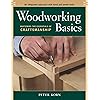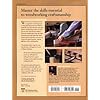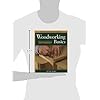




Ready to go? Add this product to your cart and select a plan during checkout. Payment plans are offered through our trusted finance partners Klarna, PayTomorrow, Affirm, Afterpay, Apple Pay, and PayPal. No-credit-needed leasing options through Acima may also be available at checkout.
Learn more about financing & leasing here.
This item is eligible for return within 30 days of receipt
To qualify for a full refund, items must be returned in their original, unused condition. If an item is returned in a used, damaged, or materially different state, you may be granted a partial refund.
To initiate a return, please visit our Returns Center.
View our full returns policy here.
Format: Paperback
Description
Woodworking Basics presents an approach to learning woodworking that has proven successful for hundreds of people who have taken the author's introductory course over the past 20 years. Peter Korn's method helps new woodworkers learn the right techniques from the beginning. More experienced woodworkers can use it to master the classic furniture-making skills key to fine craftsmanship. Korn includes two attractive and useful projects -- a small bench and a side table with a door and drawer ― providing you the opportunity to practice skills and develop confidence with tools. This book provides a step-by-step introduction to all aspects of woodworking, including:Safe use of woodworking machineryCorrect use of hand toolsMilling a board four-squareCutting a mortise-and-tenon jointCutting dovetails Read more
Publisher : Taunton Press (October 1, 2003)
Language : English
Paperback : 192 pages
ISBN-10 : 156158620X
ISBN-13 : 02
Item Weight : 1.4 pounds
Dimensions : 8.5 x 0.44 x 10.88 inches
Best Sellers Rank: #78,081 in Books (See Top 100 in Books) #23 in Carving Crafts #31 in Carpentry #44 in Woodworking Projects (Books)
#23 in Carving Crafts:
#31 in Carpentry: